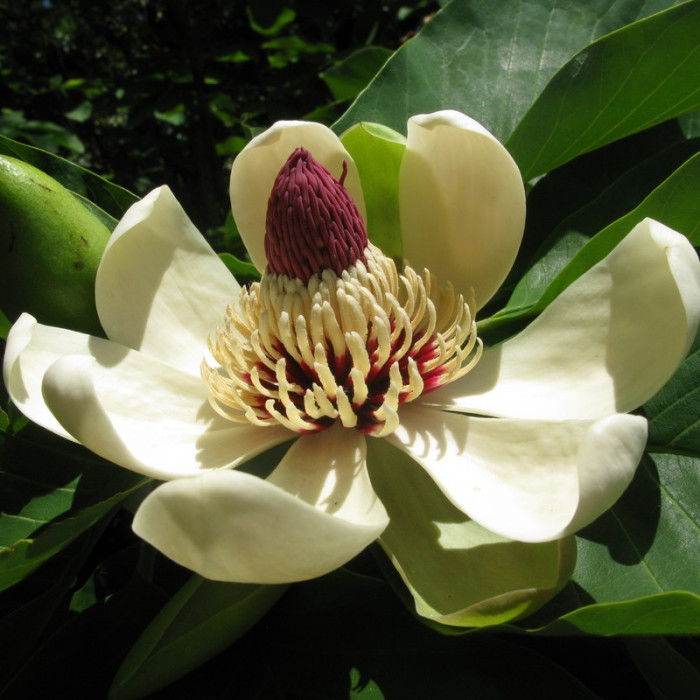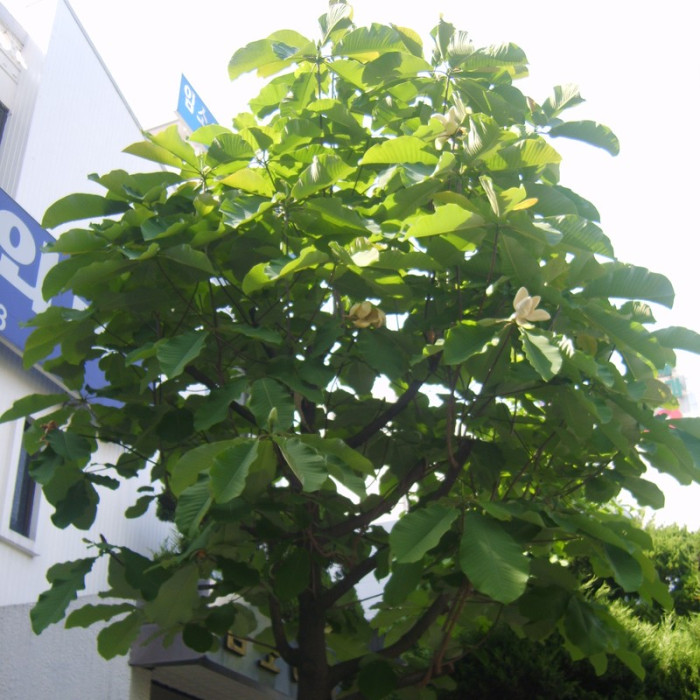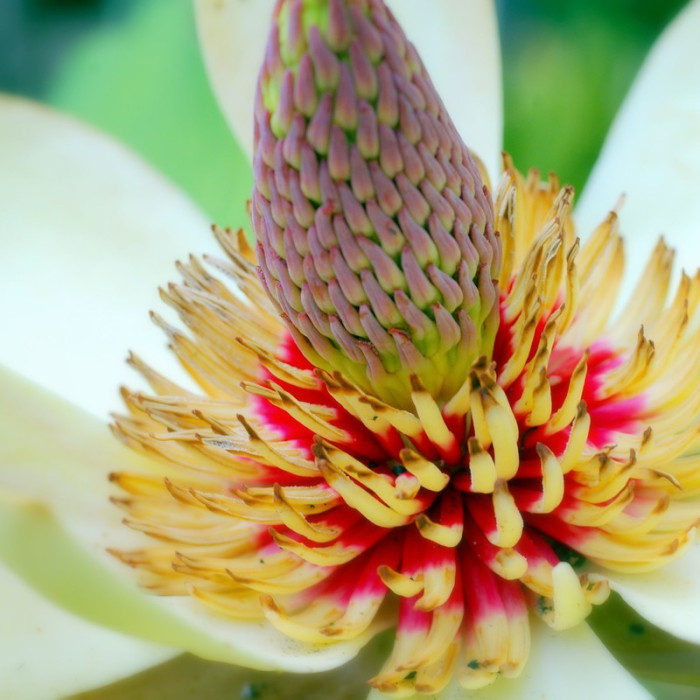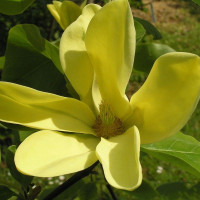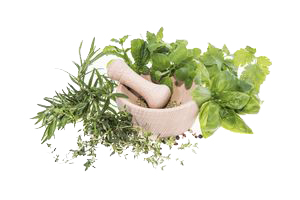Magnolia obovate - is a species of flowering plants belonging to the genus Magnolia of the Magnolia family (Magnoliaceae). An extremely valuable ornamental breed with relatively high cold resistance. A deciduous tree up to 30 meters high, with a wide-pyramidal, somewhat loose crown and a trunk with a diameter of 60-70 centimeters, covered with light gray smooth bark. The shoots are initially silky pubescent, then bare, and by autumn they are brownish-chestnut, with a bluish waxy coating.
The buds are pubescent, 3-9 centimeters long, 0,7-1 centimeter in diameter, light green, with a slight yellowish tint in autumn. The leaves are collected at the ends of the shoots, obovate, 20-40 centimeters long, 15-20 centimeters wide, with a rounded base, suddenly tapering at the apex into a short blunt end, greenish and glabrous above, bluish-gray below, pubescent or glabrous along the veins. Petioles are 2.5-4 centimeters long.
The flowers are creamy white or white, with a pale lemon tint towards the end of flowering, fragrant, broadly cupped, about 13-18 centimeters in diameter. Perianth of 12-13 lobes; the outer lobes at the ends are blunt, pink or reddish, leathery; the internal ones are obovate, narrowed towards the base, about 8 centimeters long, 1.8-3.8 centimeters wide. The fruit is an elliptical, bright red collective leaflet 12-18 centimeters long. Flowering in May - June. Fruiting in September - October.
Growing magnolia obovate.
Magnolia is propagated from seeds, air layering and seedlings. The seeds ripen in a red oily shell, which protects them from drying out, as a result of which they quickly lose their viability. The seeds are peeled from the shell and sown in boxes with soil for further storage in a cool place (cellar, loggia) at a temperature of 6-10 degrees (but not lower than 3) and left for stratification for 4-5 months, regularly moistening. After 5 months they germinate. Next, the plant can be transplanted into another box or pot with a height of at least 30 cm, otherwise the plant will slow down its growth. In the first year, magnolia seedlings develop slowly. True leaves appear in early June, but active growth begins in August-September.
The planted plants are regularly fed and watered with a solution of mineral fertilizers until the end of August inclusive. Further, the seedlings develop faster and can reach a height of 1.3 meters. But such plants overwinter hard in open soil, so with the onset of the first cold weather (before frost), they are brought into a bright and not very warm room. When the magnolia sheds its leaves (and if it doesn’t, you need to cut them off with scissors), move it to the cellar. In spring, the plants will be ready for planting in open ground. This method of propagation, although painstaking, has advantages - the plant will actively increase its mass during the first season, and then the stronger seedling will withstand unfavorable conditions. But from sowing the seeds to flowering it will take at least 10-12 years.

No questions about this product, be the first and ask your question.


